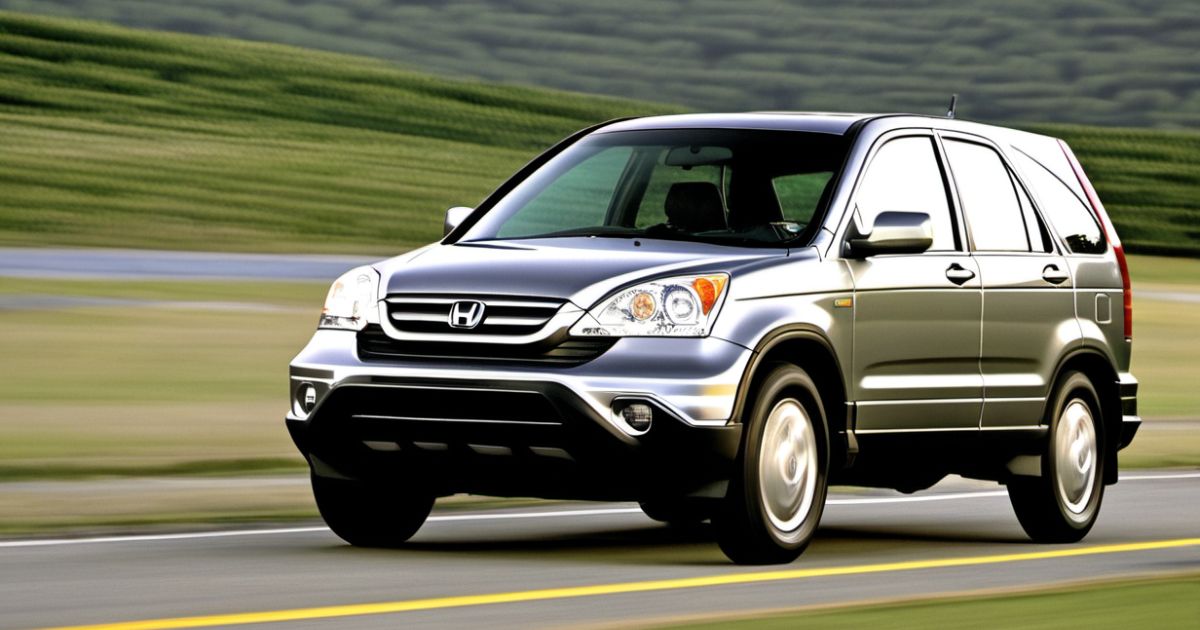The Honda CR-V has long been one of the pioneers in the compact SUV segment, captivating drivers with its perfect blend of utility, efficiency, and reliability. However, like any other vehicle, not all model years have been created equal. Some shine brighter than others, offering an unparalleled driving experience, while others fall short, leaving owners with a bitter taste.
In this ultimate guide, we’ll embark on a journey through the annals of CR-V generations, meticulously analyzing each model year to uncover the best and worst Honda CR-V years. With a thorough exploration into reliability surveys, consumer ratings, recall histories, and owner reviews, we’ve compiled a comprehensive resource to help you make an informed decision when considering Honda’s flagship SUV.
Whether you’re a seasoned CR-V enthusiast or a first-time buyer, this guide will equip you with invaluable insights into the strengths and weaknesses of each model year. From technological advancements to common issues, our analysis is tailored to provide you with a clear picture of what to anticipate, ensuring you navigate the compact SUV market with confidence.
So, let’s dive right into the different CR-V generations and uncover the standout years that have captivated drivers and the ones that have left them wanting more.
Honda CR-V Generations
Before we delve into the nitty-gritty of the best and worst years, it’s crucial to understand the Honda CR-V Generations. These generations signify distinct changes in design, features, and technology, each one shaping the evolution of Honda’s beloved compact SUV.
Here’s a breakdown of the CR-V’s generations, starting from 2002:
- 2nd generation (RD4-RD9): 2002-2006
- 3rd generation (RE1-RE5, RE7): 2007-2011
- 4th generation (RM1-RM4, RE5-RE6): 2012-2016
- 5th generation (RW1-RW8, RT5-RT6): 2017-2022
- 6th generation (RS): 2023-Present
Understanding these generations will provide context as we explore the standout and lackluster model years, helping you make an informed decision that aligns with your needs and preferences.
Honda CR-V Best, Neutral, and Worst Years
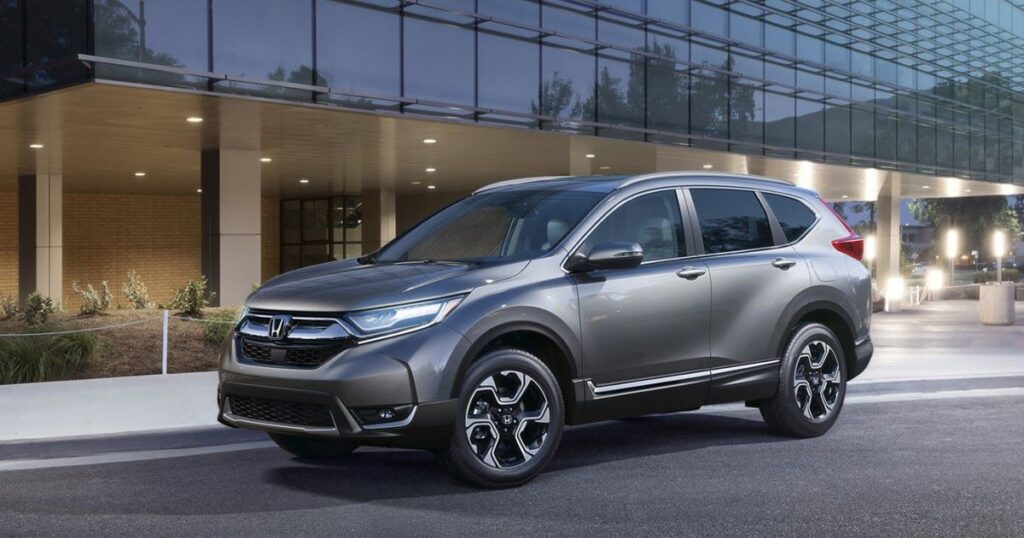
When ranking and categorizing the Honda CR-V model years, numerous factors come into play. These encompass:
- Owner-reported reliability (surveys)
- Annual maintenance costs
- Safety ratings
- Consumer Reports reliability scores
- Consumer Reports owner satisfaction scores
- NHTSA recalls, investigations, and complaints
- Edmunds owner ratings
- JD Power owner ratings
- Kelley’s Blue Book (KBB) owner ratings
- VehicleHistory owner ratings
- Cars.com owner ratings
By meticulously analyzing and weighing these factors, we’ve created a comprehensive rating system that provides an overall view of each year’s performance. The table below summarizes our categorizations for the best, neutral, and worst years:
| Generation | Best Years | Neutral Years | Worst Years |
| 2nd generation (RD4-RD9) | 2005, 2006 | N/A | 2002, 2003, 2004 |
| 3rd generation (RE1-RE5, RE7) | 2009 | 2010, 2011 | 2007, 2008 |
| 4th generation (RM1-RM4, RE5-RE6) | 2013, 2016 | 2012 | 2014, 2015 |
| 5th generation (RW1-RW8, RT5-RT6) | 2022 | 2019, 2020 | 2017, 2018, 2021 |
“Neutral Years” are years when the Honda CR-V didn’t particularly shine but also didn’t have glaring issues. They offer a balanced performance, making them safe bets for those who are undecided.
With the context set, let’s delve deeper into the specifications, features, and issues of the best, neutral, and worst Honda CR-V years. It’s crucial to note that some factors, like NHTSA recalls, negatively impact a car’s rating.
More complaints and recalls mean lower reliability, leading to a decreased score. Moreover, it’s worth highlighting that in some cases, such as with the Equinox EV, it turns out better than its cousin, shedding light on the importance of individual model analysis.
Best & Worst Years for Honda CR-V 2nd Generation (2002-2006)
The second generation of the Honda CR-V, running from 2002 to 2006, brought with it several design and technological changes. This generation saw a more rugged design and enhanced powertrain options. However, with these changes came a series of issues that plagued certain model years.
The Best Years: 2005, 2006
The 2005 and 2006 models of the Honda CR-V showed improvements over their predecessors. By 2005, engine problems that were present in earlier models seemed to have decreased. The CR-V continued to be known for its comfort, space, and reliability. Many users appreciated the improvements made in the 2005 and 2006 models, making these years standout as the best among the second generation.
The Worst Years: 2002, 2003, 2004
The 2002 model experienced airbag and air conditioner problems, along with some engine issues. The most common problem with this year’s model was the “Black Death,” where the AC compressor fails and contaminates the entire system, leading to a repair cost of nearly $1,600.
The 2003 model continued the problems of the 2002 model, with the addition of a recall concerning shift cable linkage. According to this recall, on certain SUVs equipped with automatic transmissions, excessive corrosion of the shift cable linkage could prevent the driver from shifting the automatic transmission into park, creating the potential for accidents.
In 2019, Honda recalled certain 2002-2006 CR-V vehicles due to concerns that the passenger frontal airbag inflators could explode due to propellant degradation, a situation exacerbated by prolonged exposure to high humidity and temperatures.
It’s also worth noting that the second generation of the Honda CR-V has a higher number of recalls than subsequent generations. If considering a model from this generation, checking the VIN for any recalls or issues is highly recommended.
Best & Worst Years for Honda CR-V 3rd Generation (2007-2011)
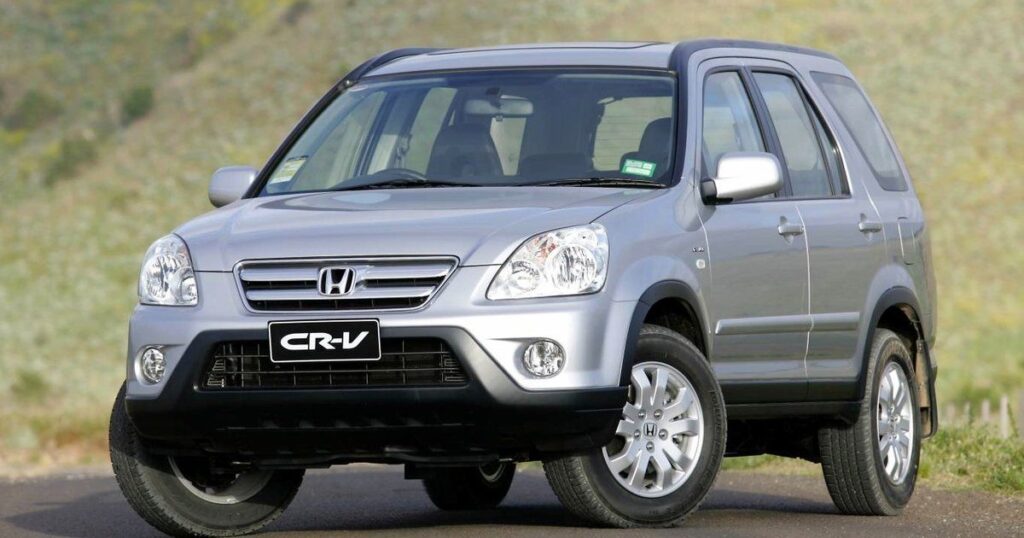
The Honda CR-V’s third generation, spanning from 2007 to 2011, ushered in a new era of design and features, emphasizing a more urban and sophisticated look. This generation also made improvements in fuel efficiency and interior space.
The Best Year: 2009
The 2009 Honda CR-V model was relatively problem-free compared to its siblings from the same generation. It carried over the virtues of its predecessors such as comfort, reliability, and practicality. The 2009 model didn’t have the same breadth of complaints covering airbags and electrical issues that were prominent in other years of this generation, making it the standout model.
The Neutral Years: 2010, 2011
The 2010 and 2011 models, while having fewer major issues than the 2007 and 2008 models, still had a few concerns raised by owners. Most of these concerns were continuations from the 2007 and 2008 models:
- The rear-differential fluid issue, a carry-over problem from the second generation, persisted.
- Some owners reported faulty AC compressors.
- Occasional complaints about steering fluid leaks were also registered.
The Worst Years: 2007, 2008
The 2007 model year kicked off the third generation with a high number of complaints. Most complaints were centered around airbags and electrical issues related to doors, locks, and linkages. Owners reported that the lock actuator would fail, leading to doors locking and unlocking while driving.
These problems persisted into 2008, and the complaints about airbags grew. Owners reported instances where airbags failed to deploy. Additionally, in 2019, Honda recalled certain 2007-2011 CR-V models due to improperly installed passenger airbag inflators.
A significant and alarming issue with the third-generation CR-V was the unwanted acceleration problem. Drivers would press the brake, but the engine would rev up, causing unintended acceleration. This dangerous situation had the potential to end disastrously and could come with a hefty repair bill of up to $5,000.
Another noteworthy problem was the under-inflation of airbags, which posed a safety risk as an under-inflated airbag could cause the occupant to collide with hard surfaces, possibly resulting in a concussion.
Best & Worst Years for Honda CR-V 4th Generation (2012-2016)
The fourth iteration of the Honda CR-V, which spanned from 2012 to 2016, showcased Honda’s efforts to modernize its beloved SUV. This generation of the CR-V presented a refined design, innovative technological advancements, and an emphasis on safety and fuel efficiency.
The Best Years: 2013, 2016
The 2013 Honda CR-V is frequently praised for its dependability and lesser mechanical issues. It successfully integrated new technological and safety features, which, combined with its smooth drive and comfort, made it a favorite among many.
Contrary to the issues of 2015, the 2016 model corrected many of its predecessor’s pitfalls. The complaints about engine-related problems were significantly less frequent. Additionally, the improvements in the infotainment system and added safety features made it a solid choice for consumers.
The Neutral Year: 2012
The 2012 CR-V, being the introductory year for the fourth generation, set the stage for what was to come. While it introduced the new aesthetic and features that would define this generation, it didn’t quite reach the heights of the 2013 and 2016 models in terms of performance and reliability. However, it also didn’t suffer from the more severe issues present in 2014 and 2015, making it a middle-of-the-road option.
The Worst Years: 2014, 2015
The 2014 model year continued to see problems from the previous generation, such as issues with the lock actuators. New complaints emerged regarding faulty tire pressure sensors and a notable grinding noise from the VTC actuator. These concerns, though addressable, were points of contention among owners.
The 2015 CR-V stands out as one of the most problematic years within the fourth generation. Predominant issues included engine-related problems like stalling and pronounced engine noises. One particular annoyance was the vehicle’s tendency to shudder while idling. Honda’s recommendation to update the Powertrain Control Module (PCM) and install a tailgate damper lift kit only resolved these issues for some.
Further complaints described an issue with rodents being attracted to the soy-based wiring, causing damage, and malfunctioning heaters.
Best & Worst Years for Honda CR-V 5th Generation (2017-2022)
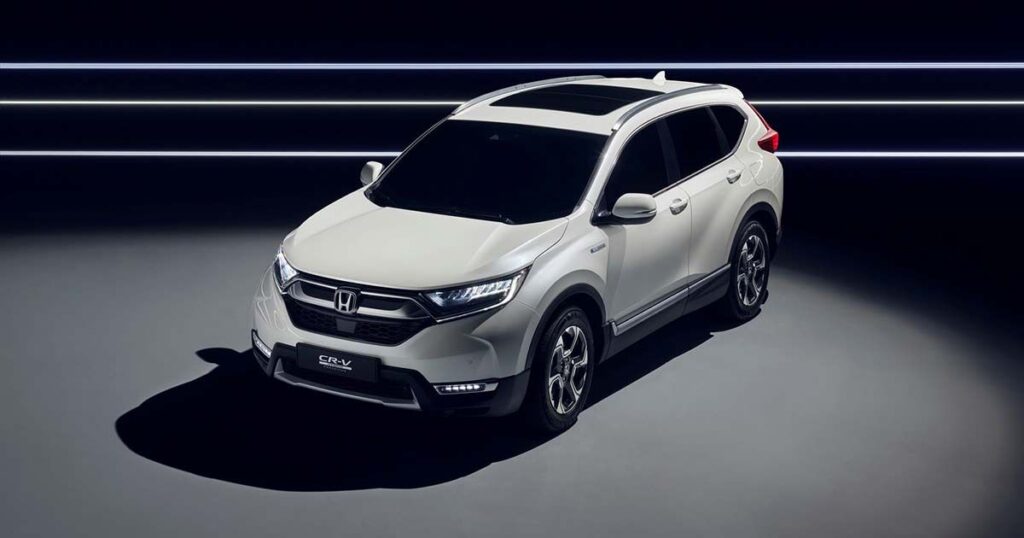
Launching in 2017, the fifth generation of the Honda CR-V offered a renewed vision of Honda’s flagship SUV. Its edgier design, modernized technology suite, and evolved performance dynamics showcased the brand’s intent to stay ahead in the fiercely competitive SUV segment.
The Best Years: 2022
The 2022 Honda CR-V exemplified the culmination of feedback and improvements over the earlier years of the fifth generation. Addressing past concerns while also introducing new features, the 2022 model presented an optimal balance of reliability, performance, and technological integration.
With fewer reported issues and a favorable reception, it became a sought-after choice for many SUV enthusiasts.
The Neutral Years: 2019, 2020
The 2019 Honda CR-V carried forward with the intent to refine its performance and address some of the concerns from its predecessors. While improvements in engine performance and safety measures were notable, the model still fell short of achieving the excellence of the later 2022 variant.
Situated as a transitional model in the generation, the 2020 Honda CR-V strived to strike a balance. The introduction of a hybrid variant signaled Honda’s commitment to sustainable mobility.
The Worst Years: 2017, 2018, 2021
Beginning the generation, the 2017 CR-V faced multiple challenges, predominantly related to its electrical system, engine, and powertrain. A considerable number of owners flagged concerns over engine stalling, creating safety and reliability concerns. Additionally, dashboard lights were unpredictable, leading to further dissatisfaction.
Continuing some of the issues from the 2017 model, the 2018 CR-V introduced another significant concern: problems with service brakes. A number of owners recounted instances where brakes engaged unexpectedly, adding to the safety concerns for this model year.
Despite being a later model in the generation, the 2021 CR-V faced setbacks. Owners notably gave it a low rating of 1.9 out of 5 on VehicleHistory.com, emphasizing persistent issues, especially those concerning the brakes which engaged unpredictably.
Honda CR-V 6th Generation (2023-Present)
The 2023 Honda CR-V continued the legacy of its predecessors while embracing new technological changes. This model boasted enhanced safety features, including an improved Honda Sensing suite with superior lane-keeping and adaptive cruise control functionalities.
It also introduced a more efficient hybrid system, ensuring better fuel economy without compromising on power. The interior saw a significant revamp, offering a more spacious environment, a digital dashboard, and enhanced connectivity options with the infotainment system.
Building on the advancements of the previous year, the 2024 model further refined its safety and technological offerings. One notable addition was the advanced pedestrian detection system, aimed at urban driving environments.
The 2024 CR-V also debuted a new e-AWD system, enhancing off-road capabilities and providing better traction in challenging driving conditions. Aesthetic tweaks were evident, with a redesigned grille and sharper LED headlights, enhancing the vehicle’s overall visual appeal.
Both models, while relatively new, promise a synthesis of Honda’s dedication to reliability, innovation, and customer satisfaction. As more real-world data emerges, a clearer picture will form about any potential issues or notable highlights of these vehicles.
Honda CR-V Average Resale Values
The following graph provides a comprehensive view of the Honda CR-V’s average resale values over a specified time frame. As one of the leading SUVs in the market, understanding its resale trajectory can offer insights into the vehicle’s durability, demand, and overall perceived value.
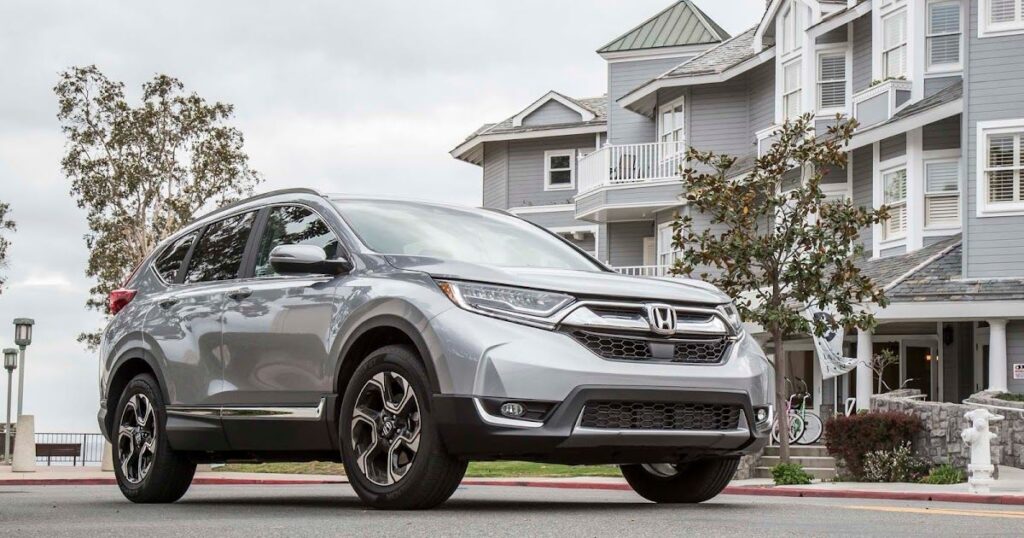
Conclusion
As we wrap up our exploration of the Honda CR-V’s generational evolution, remember that knowing the history and issues of each model year is vital in making an informed buying decision. Whether you prioritize reliability, cutting-edge technology, or a blend of both, this guide has equipped you with the knowledge to navigate the compact SUV segment with confidence.
We’d love to hear your personal experiences and insights into the best and worst years for the Honda CR-V. Which generation have you had the best experience with, and why? Share your thoughts in the comments below, and let’s continue this conversation about one of the most iconic compact SUVs on the market.

Hey there! I have 5 years of experienced repairing all makes and models. Specializes in engine diagnostics, brake repair, electrical systems, and teaching DIY maintenance tips. Passionate about keeping cars running safely.
